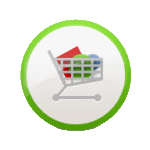Home »
Shelfcheck » Here
Studies (
*) show that on average, 5 to 10% of the products offered in grocery stores are unavailable at any given time, a situation which has not improved for 2 decades. Products that are not available to the consumer on the dedicated shelf space are referred to as being
out-of-shelf (OOS). Monitoring OOS is the cornerstone of
on-shelf availability optimization. Shelfcheck, a webapp by Lokad, delivers the OOS metrics you need along with alerts to optimize your on-shelf availability.
Through
full historical analysis of past OOS issues, your company gains immediate visibility on the OOS problem. Let store managers benchmark product availability over time, or benchmark products against each other; not mentioning benchmarking stores directly.
Consume
OOS alerts anywhere, even on your smartphone. Shelfcheck is optimized for low-bandwidth and low-resolution device.
Get the
most accurate OOS analysis on the market, as Lokad manages all demand patterns on your behalf: seasonality, trend, promotion, product life cycle... No statistical skills are required.
We charge a monthly subscription that
depends on the number of stores and size of the stores monitored. Limited setup cost. No termination cost. When you stop using Shelfcheck, we stop charging. No questions asked.
Achieve
complete process automation with Shelfcheck. Pull data from your current IT systems, and get results through web reports, or directly injected within you existing business apps. Ongoing maintenance of Shelfcheck requires near-zero manpower.
Out-of-shelf problems cause lost sales and frustration
Many root causes exist for out-of-shelf (OOS) issues:
- Product has not been ordered in proper quantities.
- Product is not at the right place and customers can't find it.
- Product has been stolen and incorrect electronic inventor level prevents reordering.
- Packaging is damaged and customers put back product after having a close look.
- ...
Whenever a product is not available on the shelf,
sales are lost. Studies (
*) show that clients will substitute with available products only 1/3 of the time. OOS situations causes a loss of sales and generates
client frustration which turns into loss of loyalty. OOS drive your clients to your competition.
How does Shelfcheck work?
Shelfcheck leverages an
indirect measurement method. Instead of trying to assess the physical state of the shelf itself, we identify an OOS by analyzing and identifying the impact on store sales. For example, if sales of a given product drop to a level that is significantly lower than expected (or 'normal'), then the product is very likely to suffer an OOS issue. A multitude of such patterns and signals is monitored and identified by Shelfcheck, which in combination give a clear picture that is reported by Shelfcheck.
The key ingredient for such an OOS analytics technology to work is a state-of-art
forecasting technology. Indeed, OOS are identified as a divergence between
observed sales and
expected sales (aka forecasts). Our technology combines a
vast library of statistical models, an extensive model selection mechanism, a multiple time-series modeling approach and a
native cloud computing infrastructure to power such a processing-intensive solution. As a result, all
common patterns are taken into account: seasonality, trend, day of the week, promotions, product life-cycle and much more.
Does Shelfcheck apply to your company?
If you have shelves holding fast rotating inventories, yes, it does. Food retailers are the
archetype of businesses who benefit the most from Shelfcheck; other segments such as do-it-yourself (DIY) stores, for example, benefit also from this technology greatly as well. As a rule of thumb, our technology creates the most value-add when at least a
small percentage of products get sold once a day on average.
Then, part of the problem is that without an OOS metering system such as Shelfcheck, retailers are
blind when it comes to OOS issues. Since Shelfcheck comes without any upfront investment, it offers you the opportunity to
benchmark your out-of-shelf rates for a very modest cost that requires neither management bandwidth nor intensive manpower from store employees. Doing a quick benchmark with Shelfcheck is the best way to assess where your company stands.
Why choose Shelfcheck over alternatives or competitors?
Improving shelf availability is a century old fight. Yet, traditional solutions suffer from significant drawbacks:
- Direct shelf control is extremely labor intensive.
- RFID remains too expensive for most retail segments.
- Rule-based alters are too inaccurate to be of practical use, except for super top sellers.
The technological challenge behind Shelfcheck is the
quality of OOS metrics. Indeed, it's easy to design a software that churns out a truckload of OOS alerts, but the time of the store staff is precious - and expensive - and employees can't waste their energy chasing
false-positive alerts, or
phantom problems advertized by the software, but having no real counterparts within the store.
By leveraging a superior
forecasting technology, Shelfcheck delivers OOS metrics with both unprecedented sensibility and precision, the two metrics that matter most when it comes to OOS analytics.
